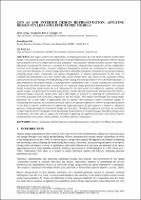Chapter Gen AI and Interior Design Representation: Applying Design Styles Using Fine-Tuned Models
Author(s)
Jeong, Hyun
Kim, Youngchae
Yoo, Youngjin
Cha, SeungHyun
Lee, Jin-Kook
Language
EnglishAbstract
This paper explores the applicability of Image-generation AI in the field of interior architectural design, with a particular focus on automating interior design representation based on design styles. Interior design representation involves a complex process that integrates visual elements with functionality and user experience. Effectively visualizing this process is essential for facilitating communication among the various stakeholders involved in the design process. However, traditional visualization methods are constrained by expert resources, costs, and time limitations. In contrast, image-generation AI has the potential to automate various design elements, including design styles, components, and spatial arrangements, to enhance representation. In this study, we evaluated the performance of a base model using various design styles and, based on the evaluation results, selected styles for fine-tuning. The methodology for fine-tuning these design styles involved the following steps: 1) data preparation and preprocessing, 2) hyperparameter optimization, and 3) model training and construction. Utilizing the fine-tuned model thus constructed, we conducted image generation demonstrations. The research results revealed that design styles not well represented by the base model were effectively captured, and high-quality images were generated by the fine-tuned model. Notably, this fine-tuned model demonstrated the ability to represent images of specific design styles with a high degree of accuracy in capturing the characteristics and keywords associated with each style, compared to the base model. This implies that through fine-tuning image-generation AI, a wide range of applications can be inferred when aiming to create customized designs by considering these aspects. In conclusion, this study explores an efficient approach to interior design representation in the field of interior architecture by employing image-generation AI and proposes a method to effectively generate visualized images by training on design style keywords. Through this approach, our study can contribute to improving the interior design process by facilitating the generation of visualized images that reflect design styles. Furthermore, the study aims to suggest the potential for applying this approach not only to the field of interior architecture but also across various domains to achieve effective visualization
Keywords
Interior Architecture Design; Interior Design Representation; Generative AI; Model Fine-tuningDOI
10.36253/979-12-215-0289-3.95ISBN
9791221502893, 9791221502893Publisher
Firenze University PressPublisher website
https://www.fupress.com/Publication date and place
Florence, 2023Series
Proceedings e report, 137Classification
Artificial intelligence


 Download
Download Web Shop
Web Shop